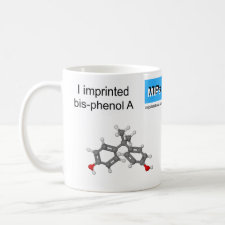
Authors: Oh DK, Yang JC, Hong SW, Park J
Article Title: Molecular imprinting of polymer films on 2D silica inverse opal via thermal graft copolymerization for bisphenol A detection.
Publication date: 2020
Journal: Sensors and Actuators B: Chemical
Volume: 323
Article Number: 128670.
DOI: 10.1016/j.snb.2020.128670
Alternative URL: https://www.sciencedirect.com/science/article/pii/S0925400520310170
Abstract: Bisphenol A (BPA), which is extensively used in the plastic industry, is a known endocrine disrupting chemical whose release into the environment from industrial products is detrimental to human health. In this study, to characterize BPA-detectable imprinted films on quartz crystals (QCs), sensitive molecularly imprinted quartz crystal microbalance (MIP-QCM) sensors were fabricated. The MIP films were synthesized on 2D porous SiO2 and Au pinholes that were generally observed from replica structures prepared using a polystyrene colloidal monolayer as an insulating mold. For MIP film formation, surface-initiated atom transfer radical polymerization was precisely controlled to adjust the MIP film growth on initiator-modified porous structures. Note that three BPA-imprinted poly(4-VP-co-EGDMA) films, i.e., MIP(8-h), MIP(16-h), and MIP(24-h), under reaction time control were successfully prepared. Furthermore, all imprinted patterned surfaces were characterized via atomic force microscopy (AFM) and scanning electron microscopy (SEM). The MIP(24-h) film demonstrated the highest imprinting factor (i.e., IF &8776; 2.4) and sensitivity (i.e., 1.219 ± 0.079 Hz nM-1), although the maximum binding capacity (Qmax) and binding capacity (Qe) at 1-h rebinding equilibrium was relatively lesser than those of the MIP(8-h) and MIP(16-h) owing to the differentiation of the deposited MIP mass. Using the Freundlich isotherm model, the binding affinity of the BPA imprinted MIP films measured in an aqueous solution of BPA whose concentration ranged between 45 and 225 nM was evaluated. Finally, the selectivity of the MIP-QCM sensors for BPA detection was investigated in aqueous solutions in the presence of other analogous chemicals such as bisphenol F (BPF), bisphenol AP (BPAP), and bisphenol B (BPB). The MIP(8-h) film showed extremely high recovery percentage (&8776; 94.54 %) owing to the relatively thinner film formation, which was significantly comparable with that of other MIP films, i.e., 68.37 % for MIP(16-h) and 61.99 % for MIP(24-h). However, the MIP(24-h) film appeared to have higher selective features with selectivity coefficients and relative selectivity (k* and k' &8776; 2.5, respectively) despite measurement in a limited period (i.e., 1-h rebinding process)
Template and target information: bisphenol A, BPA
Author keywords: Surface-initiated atom transfer radical polymerization, Colloidal lithography, Silica pore array, bisphenol-A, binding affinity, sensitivity, Freundlich isotherm



Join the Society for Molecular Imprinting

New items RSS feed
Sign-up for e-mail updates:
Choose between receiving an occasional newsletter or more frequent e-mail alerts.
Click here to go to the sign-up page.
Is your name elemental or peptidic? Enter your name and find out by clicking either of the buttons below!
Other products you may like:
 MIPdatabase
MIPdatabase









